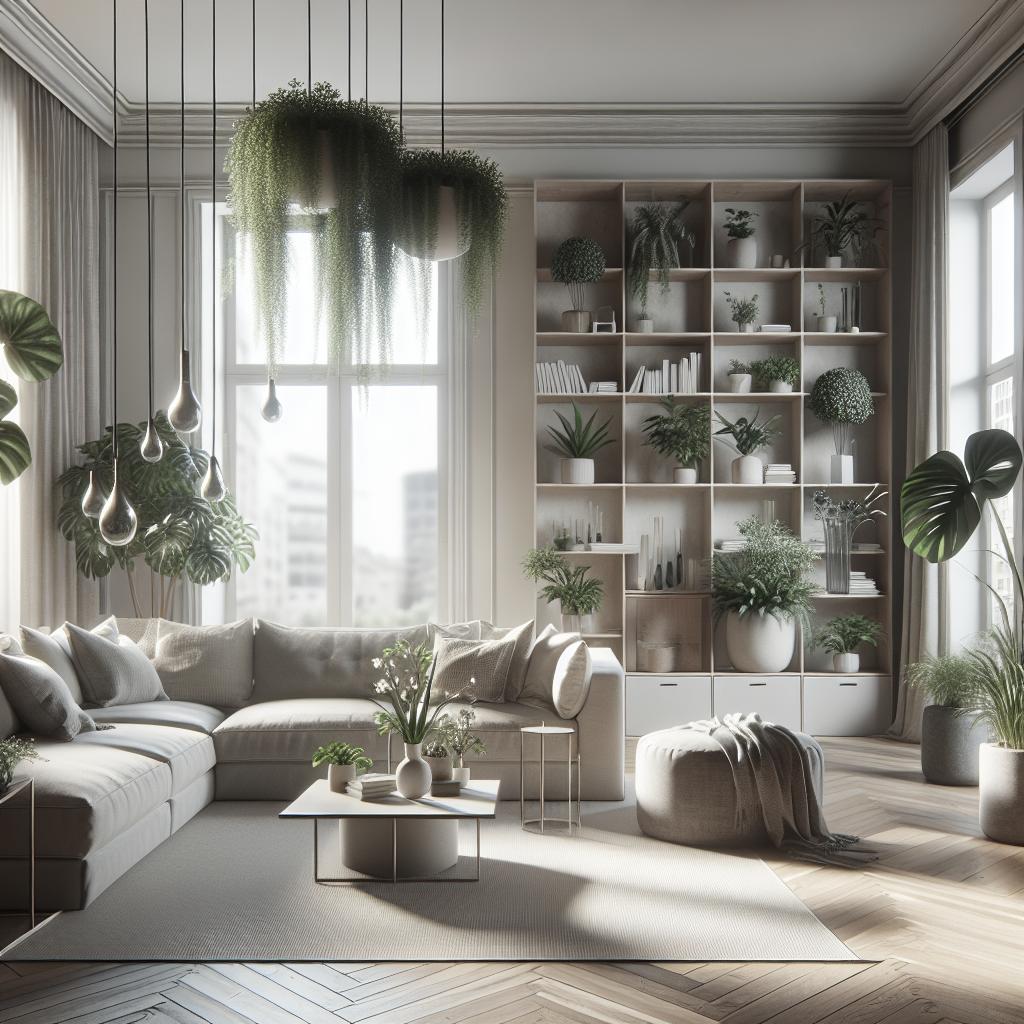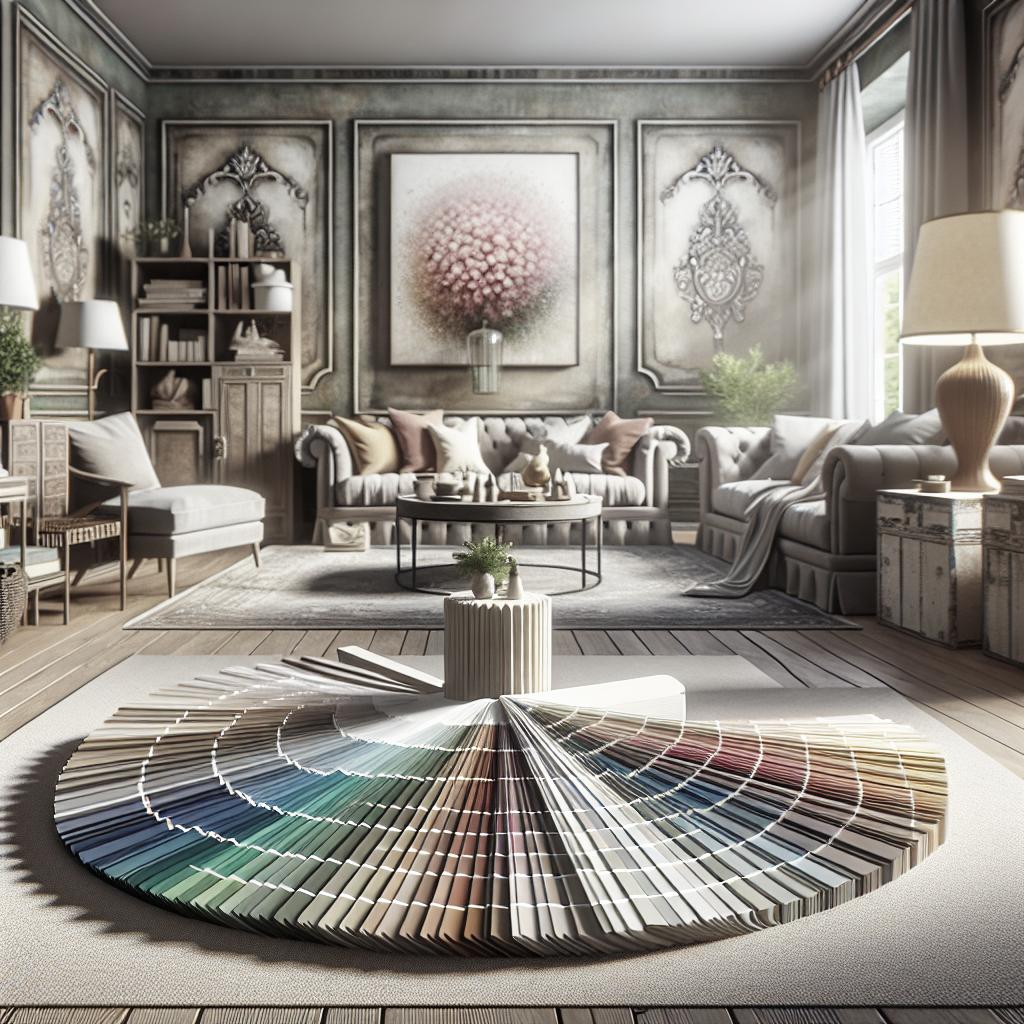Incorporating greenery into interior decor has become an increasingly popular trend, transforming spaces with natural beauty and numerous benefits. This blog post delves into the vital role plants play in interior design, from elevating aesthetics to enhancing well-being. We will explore design elements and principles, outlining how foliage can complement different styles. Furthermore, we will showcase the best spots in your home to position plants for maximum impact and discuss a selection of low-maintenance plants perfect for the busy individual. Additionally, we will address the debate on faux plants, examining their pros and cons, alongside the sustainability considerations to keep in mind. Whether you’re a seasoned plant enthusiast or a decor novice looking to refresh your home, this comprehensive guide will provide valuable insights into making greenery a harmonious part of your living space. ### Why are plants so important for interior design? #### Design Elements Plants are indispensable design elements in interior spaces, infusing rooms with color, texture, and life. They contribute an organic contrast to furniture and structural elements, whether it’s the lush green of a cascading pothos or the vibrant spikes of a snake plant. Using plants as a design element means leveraging their natural beauty to create focal points within a room, which can unify disparate elements and establish a cohesive aesthetic. Moreover, plants add dimension to interior decor by introducing varying heights and forms. This dynamic quality can break the monotony of flat surfaces and straight lines typical of many homes, adding layers of visual interest. By thoughtfully arranging plants, designers can soften stark spaces and create a more inviting atmosphere. #### Design Principles The integration of plants aligns perfectly with several key design principles. Balance and proportion, for example, can be maintained when the size and volume of plants are in harmony with the room’s dimensions and architecture. An oversized monstera works well in a spacious living room, while delicate ferns might be ideal for a cozy bedroom corner. Plants also facilitate rhythm and movement in design. By repeating certain plant types or distributing greenery throughout a space, a sense of flow is established, guiding the eye naturally from one area to another. This rhythmic placement is both aesthetically pleasing and functionally cohesive, tying different decor elements together seamlessly. #### Other Benefits of Using Plants in your Home Beyond aesthetics, plants offer myriad benefits that enhance home environments. They act as natural air purifiers, absorbing toxins and releasing oxygen, thus improving indoor air quality. Certain varieties, like peace lilies and spider plants, are particularly effective in this regard, promoting healthier, more breathable spaces. Additionally, plants have been shown to reduce stress and boost mood, creating a tranquil atmosphere ideal for relaxation or focus. The presence of greenery can increase productivity and creativity, making them a valuable addition to home offices or workspaces. Plants can also increase humidity levels, reducing the incidence of dry skin and respiratory issues. ### Where Should You Use Plants? #### Empty Corners Transforming empty corners with plants is a savvy design strategy, as these overlooked nooks can be turned into captivating green spaces. Tall plants like fiddle leaf figs or rubber plants can fill vertical space, drawing the eye upward and adding drama. Alternatively, a grouping of smaller plants at varying heights can create a layered look that capitalizes on depth and interest. Incorporating plants into corners can also help soften the sharp edges of a room, contributing to a cozier and more inviting atmosphere. By selecting plants that thrive in low-light conditions, you can ensure these corners remain lush and lively, even with limited natural light. #### Bookshelves Bookshelves present a unique opportunity to integrate plants into your decor, enhancing the visual appeal of your literary collection. Trailing plants like pothos or ivy can cascade down shelves, adding movement and flourish to the linear arrangement of books. Small succulents or cacti can be strategically placed to add pops of green without overwhelming the display. Incorporating plants on bookshelves requires a balance between aesthetic appeal and practicality. Ensure there’s sufficient space for your books and decorations while allowing room for plants to breathe and access light. #### Dining Table Placing plants on your dining table can elevate everyday meals into elegant experiences. Simple arrangements like a central vase with fragrant herbs or a terrarium centerpiece can add a touch of nature to your dining area. The key is to choose plants that are compact and won’t obstruct conversation or sightlines. Creating a connection to nature during meals can enhance dining experiences by adding freshness and vibrancy to the table setting. Selecting herbs like basil or mint can serve dual purposes by providing fresh ingredients for meals and a pleasant aroma. #### Coffee Table The coffee table serves as a perfect platform for showcasing the beauty of plants. Succulents, air plants, or a small bonsai tree can serve as conversation starters while complementing the surrounding decor. An elegant terrarium or a curated selection of petite pots can add sophistication without clutter. It’s important to scale plant selections to suit the size of the coffee table, ensuring they enhance rather than overwhelm the space. Choosing low-maintenance varieties helps ensure the display remains visually appealing with minimal effort. #### Entry Table Welcoming guests with greenery at the entry table sets a positive tone as soon as they enter the home. Tall, slender plants can guide the eye upward, while floral arrangements can add colorful charm and a refreshing scent. Whether in a vase or a sophisticated pot, plants here can make a lasting first impression. Entry tables often have limited space, so choosing plants with vertical growth or compact profiles ensures they fit comfortably alongside essentials like keys or mail trays. #### Bathrooms Bathrooms benefit greatly from the presence of plants, which can transform sterile spaces into spa-like sanctuaries. Ferns and bamboo thrive in humid environments, making them ideal for these wet spaces. A small plant on the windowsill or hanging from the ceiling can add life to the room and improve air quality. It’s essential to consider light availability when selecting bathroom plants. Many bathrooms have limited natural light, so opting for low-light-tolerant plants ensures they thrive in this environment. ### Low-Maintenance Plants for Effortless Interior Design #### Snake Plant (Sansevieria trifasciata) The snake plant is a top choice for those seeking easy-care greenery that makes a statement. Known for its upright, architectural leaves, it thrives on neglect, needing minimal water and tolerating low light. Its robust nature makes it ideal for beginners or forgetful plant owners, yet it remains an attractive addition to any room. Apart from its intriguing aesthetic, the snake plant is also renowned for its air-purifying prowess. It can eliminate toxins like formaldehyde and benzene from the air, contributing to a healthier home environment. #### Pothos (Epipremnum aureum) The pothos plant, with its trailing vines and variegated leaves, is another fantastic low-maintenance option. It can adapt to various light conditions and requires infrequent watering, making it perfect for busy individuals. Its versatile growth allows it to be trained along bookshelves or draped over tables, adding dynamic movement to decor. Pothos is also efficient at purifying the air, removing pollutants, and providing a fresh atmosphere. Its ease of propagation allows you to share cuttings with friends or extend greenery throughout your home seamlessly. #### Spider Plant (Chlorophytum comosum) Spider plants are popular for their hardy nature and charming appearance. Featuring arching leaves striped with white and green, they thrive in a range of conditions and require little attention. Their adaptability makes them suitable for various indoor environments, from living rooms to bouquets. Spider plants also rank among the best for air purification, absorbing carbon monoxide and other toxins. As they mature, they produce offshoots or “spiderettes,” which can be repotted to create new plants or shared with friends. #### Peace Lily (Spathiphyllum) The peace lily offers elegance with minimal maintenance, boasting striking white blooms amidst dark green foliage. This plant flourishes in low light and requires only occasional watering, making it an excellent option for low-maintenance decor. Its sleek appearance adds an element of sophistication to any room. Peace lilies are especially effective at boosting indoor air quality, as they can filter out numerous toxins. Their ability to increase humidity makes them perfect for dry environments, contributing to healthier living spaces. ### Is it OK to Use Faux Plants? #### Choosing the Right Faux Plants Faux plants offer a no-maintenance alternative to real greenery, making them an attractive option for those with busy lifestyles or limited light. However, choosing high-quality faux plants is crucial, as inferior versions can appear artificial and detract from a room’s aesthetics. Look for lifelike designs featuring natural textures and colors to ensure they seamlessly blend into your decor. While faux plants do not provide the air purifying or mood-boosting properties of live plants, they do offer consistent beauty without the worry of care, pests, or allergies. They can be particularly useful in challenging environments, like areas with little natural light or fluctuating temperatures, where live plants may struggle. #### Sustainability Considerations for Faux Plants When considering faux plants, it’s important to weigh sustainability aspects. Many artificial plants are made from plastic and non-biodegradable materials, contributing to environmental waste. Selecting faux plants constructed from recycled materials or companies with green practices can mitigate some of these concerns. While faux plants require fewer resources over time compared to live plants, the initial manufacturing process can be resource-intensive. Balancing the aesthetic and practicality of faux plants with their environmental impact is key for eco-conscious consumers. ### Choosing Plants that Work with Your Design Style Matching greenery to your design style ensures harmony within your decor. For modern spaces, opt for sleek plants like air plants or sansevieria that evoke minimalist elegance. In rustic or bohemian homes, consider lush, cascading greenery like pothos or ferns to complement earthy furnishings and textures. For traditional settings, orchids or peace lilies offer a classic touch with their timeless beauty. Meanwhile, eclectic interiors can benefit from diverse plant groupings that reflect varied influences and inspirations. By aligning plant selections with decor styles, a cohesive and personalized atmosphere is achieved. ### Next Steps To summarize the key takeaways of incorporating greenery into your home, the following table encapsulates the main points discussed in this blog post:
| Aspect | Description |
|---|---|
| Aesthetic Contributions | Plants introduce color, texture, and dimension, enhancing design principles like balance and rhythm. |
| Functional Benefits | Air purification, stress reduction, increased humidity, and improved mood and productivity. |
| Placement | Effective use in corners, bookshelves, tables, entryways, and bathrooms for visual and functional impact. |
| Low-Maintenance Options | Snake plant, pothos, spider plant, and peace lily as easy-care choices with aesthetic appeal. |
| Faux Plants | Consider high-quality, sustainable options for no-care decor; balance aesthetics with environmental impact. |
| Design Style Alignment | Choose plants that complement your decor style for a cohesive and personalized living space. |
By thoughtfully incorporating greenery, your home can become a tranquil, beautiful sanctuary aligned with your aesthetic vision. Whether choosing live or faux plants, the possibilities are endless for enhancing your living space with nature’s touch.


